A tryst with destiny
Freedom and Fragmentation:
Images of Independence, Decolonisation and Partition at Cambridge University
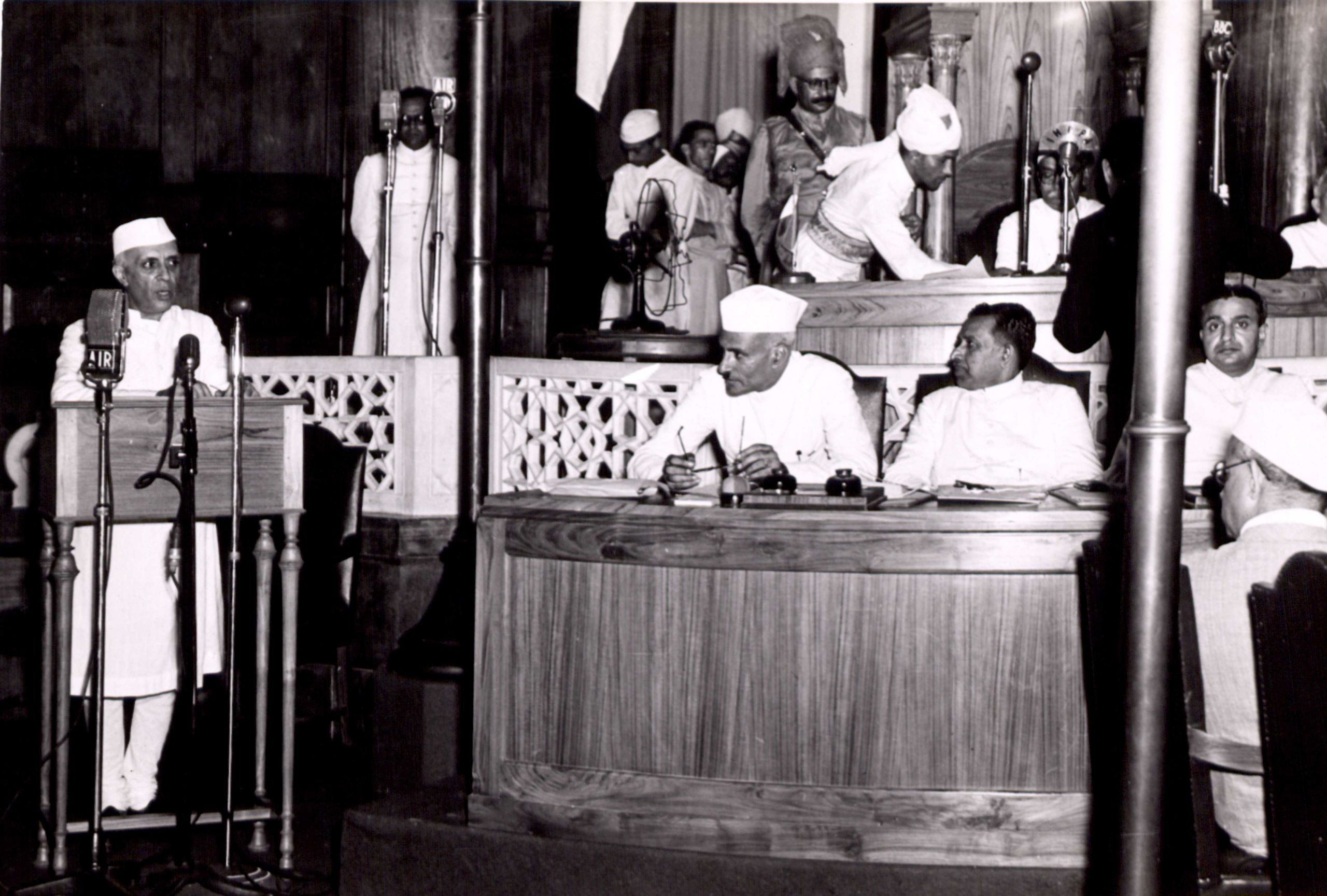
Tryst with Destiny - audio recording
"Long years ago we made a tryst with destiny, and now the time comes when we shall redeem our pledge, not wholly or in full measure, but very substantially. At the stroke of the midnight hour, when the world sleeps, India will awake to life and freedom. A moment comes, which comes but rarely in history, when we step out from the old to new, when an age ends, and when the soul of a nation, long suppressed, finds utterance...
...The ambition of the greatest man of our generation has been to wipe every tear from every eye. That may be beyond us, but so long as there are tears and suffering, so long our work will not be over. And so we have to labour and to work, and work hard, to give reality to our dreams. Those dreams are for India, but they are also for the world."
At the stroke of midnight
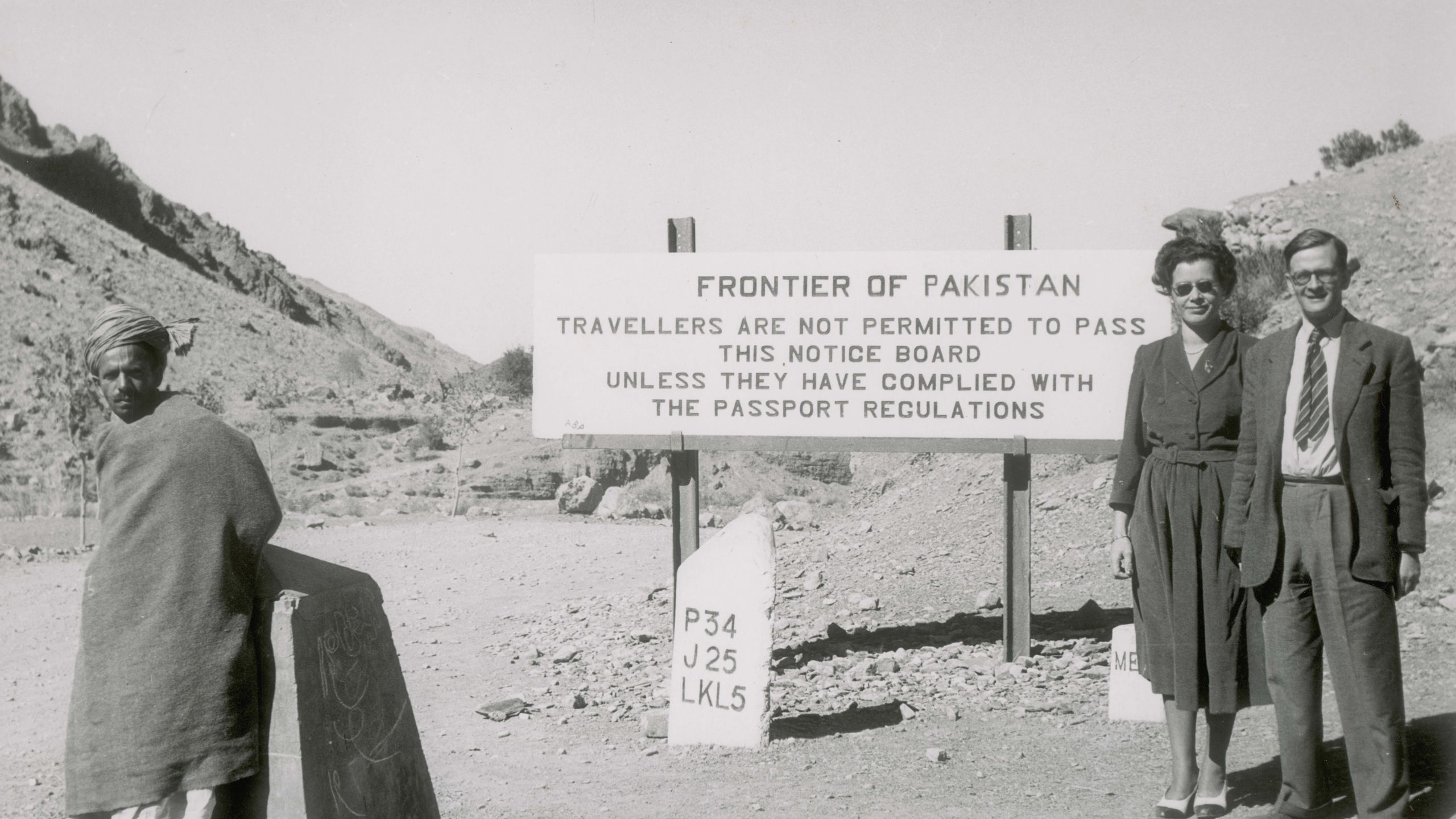
On August 15, 1947, at the stroke of midnight, India and Pakistan achieved independence from British rule – signalling the beginning of the end of the largest empire in history.
Their freedom had been hard fought and came at a huge cost. Contrary to legend, the British had not been keen to devolve power gradually. This struggle for sovereignty took many forms: violent and non-violent, elite and popular, religious and secular, plural and separatist.
To celebrate the 70th anniversary of Independence, Cambridge’s Centre of South Asian Studies is staging a unique exhibition over four floors of the Alison Richard Building – drawing on the Centre’s unparalleled collection of more than 100,000 photographs, 600 written collections, 900 maps and thousands of hours of film footage.
While the exhibition’s primary focus is on partition and independence, the collection covers more than 200 years of life under The Raj and the early decades of post-colonial India.
Featuring first-hand photographs of Gandhi, Nehru and Jinnah – and highlighting female assassins, refugees and the personal stories of those affected by the British withdrawal, Freedom and Fragmentation: Images of Independence, Decolonisation and Partition runs until October 27, 2017.
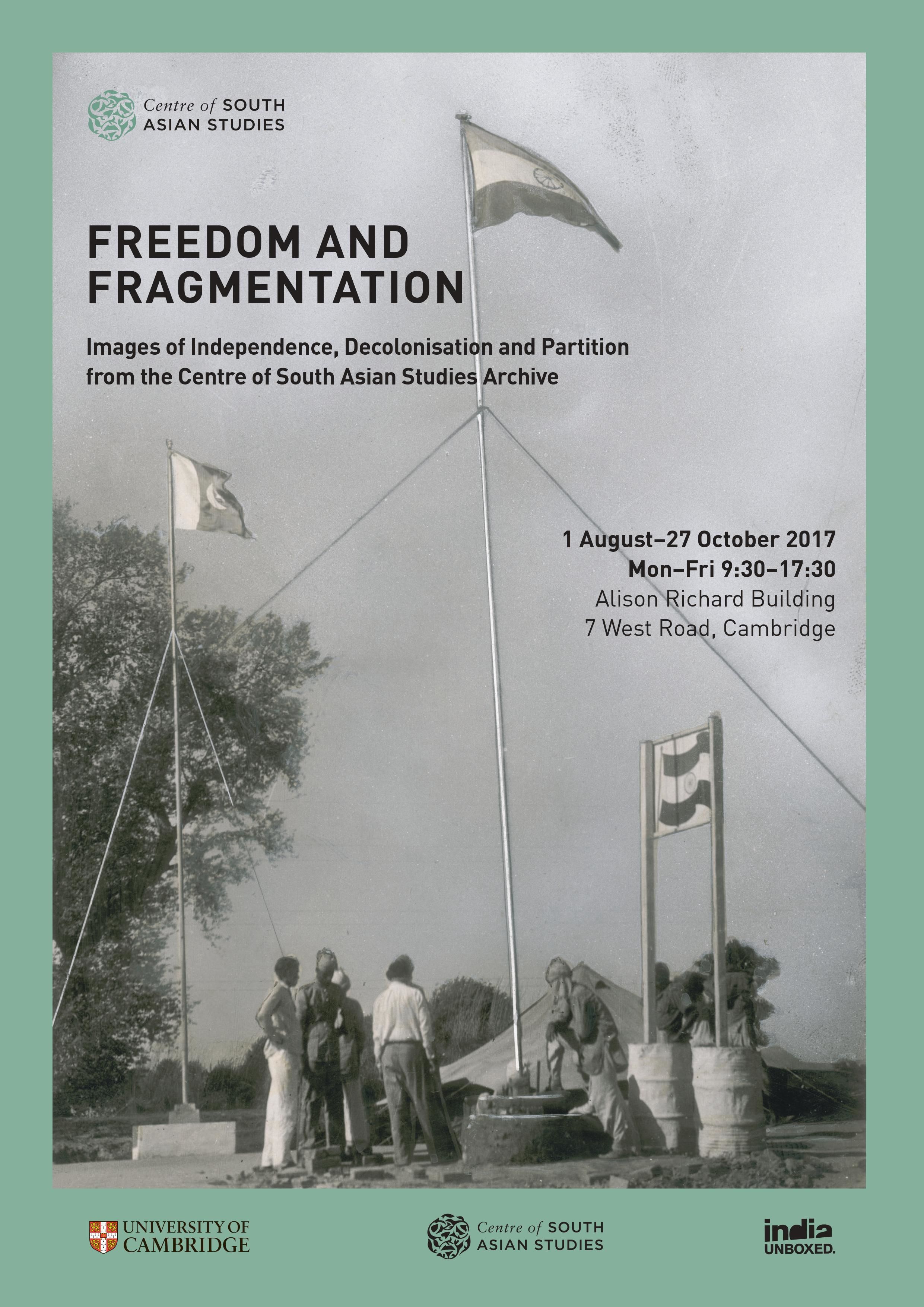
Exhibition poster
Exhibition poster
Co-curator Dr Edward Anderson, Smuts Research Fellow in Commonwealth Studies, said: “Partition was a painful, traumatic experience for tens of millions of people. Hundreds of thousands lost their lives and up to 14 million people were displaced in the single largest migration in human history.
“We are not saying this is the definitive story of partition and independence – it’s the one drawn from our collections. We want people to learn more about the way in which India and Pakistan gained their freedom – and the colonial state from which they achieved it.
“Everyone knows about Gandhi, but there was lots of violence and revolutionary movements with competing images of what an independent India should be like. Each floor of the exhibition explores one of four themes: Repression and Resistance, Ideas of Independence, Partition, and The Raj.”
Director of the Centre of South Asian Studies Professor Joya Chaterji said: “This exhibition explores what freedom meant to people on the ground as power was transferred not to one, but to two nations – India and Pakistan – and euphoria mingled with the agony of refugees, and relief with horror at the brutality of partition.
“We need to be conscious that our archive is an elite archive, primarily seen through the eyes of elite, white men which can obscure and silence many other versions of what was happening at that point. That’s what archives do, not just this one. Despite this caveat, we believe that the images and texts on display provide a rare insight into a pivotal moment in history.”
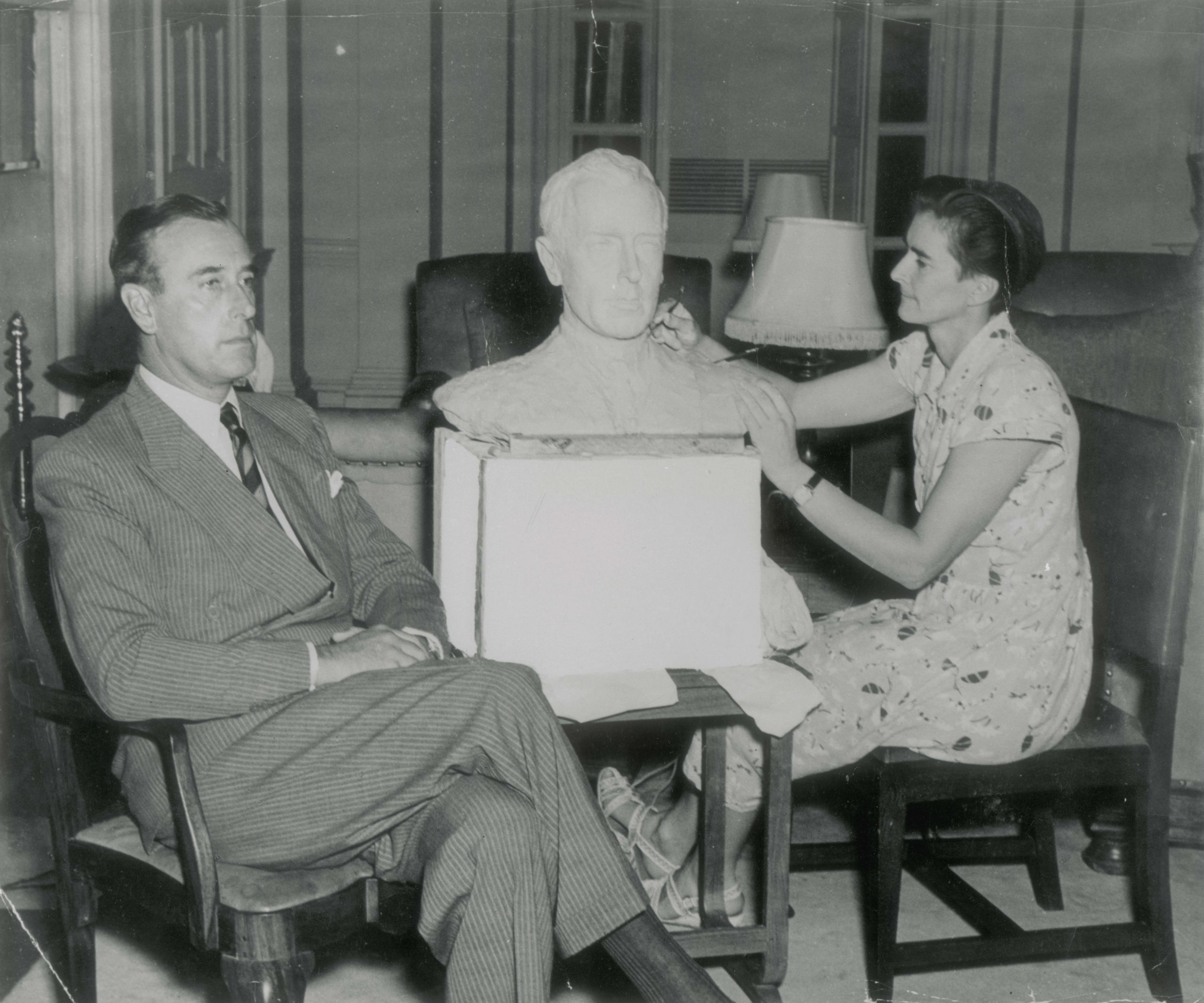
Clara Quien sculpting a bust of Louis Mountbatten, the last Viceroy of India: Clara Quien was an award-winning artist who sculpted many heads of state.
Clara Quien sculpting a bust of Louis Mountbatten, the last Viceroy of India: Clara Quien was an award-winning artist who sculpted many heads of state.
Repression & Resistance
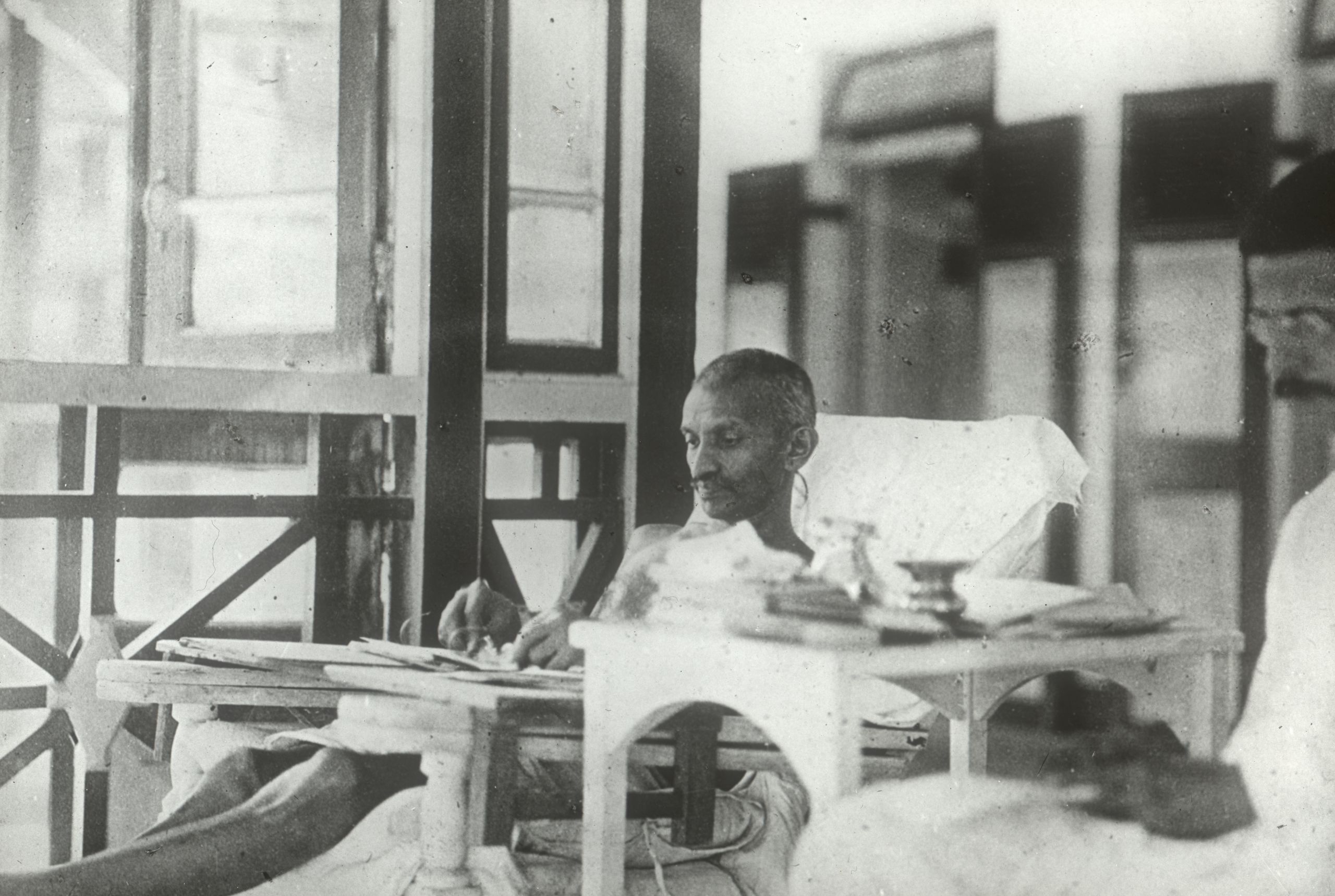
In its last decades, British rule in India faced resistance on many fronts, and in many forms.
Despite Gandhi’s global renown, in India his advocacy of non-violent non-cooperation did not persuade everyone. Some Indians responded to imperial repression by establishing revolutionary societies which tried to force the British out of India by violence.
Most such societies bound members by Hindu oaths, denying membership to Muslims. Mainstream political parties largely distanced themselves from ‘extremists’, insisting on non-violent anti-colonial campaigns based on unity between Muslims and Hindus.
Gandhi’s campaigns to boycott imported goods and alcohol, to ‘uplift’ villages, and break unjust laws sat alongside liberal efforts to reform the Raj by constitutional means. But at the time, and in the years since, the militant revolutionaries have maintained a powerful hold on the popular imagination.
The era was one of intellectual ferment, in which a variety of ideologies vied for support. Several men and women who shaped visions for independent India and Pakistan were educated at Cambridge, but their dreams for the country did not always align.
Jawaharlal Nehru, who studied natural sciences at Trinity College, Cambridge, aspired to socialist, secular, and democratic India, while Muhammed Iqbal, also an alumnus of Trinity, saw Pakistan as a crucible for Islam’s global rejuvenation.
Sarojini Naidu, the poetess who studied at Girton, sought a grand pact between India’s Hindus and Muslims. This was later orchestrated by Mohammad Ali Jinnah in 1916, then a Congress-minded nationalist and liberal.
Jinnah (not a Cambridge graduate) would later go on to become Pakistan’s ‘Quaid-i-Azam’, or great leader, and founding Governor General.
Aurobindo Ghose of King’s College led the Jugantar revolutionary society, and Subhas Chandra Bose of Fitzwilliam College forged alliances with Britain’s opponents in World War II.
Choudhary Rahmat Ali, educated at Emmanuel College Cambridge, envisioned of a federation of Muslim states of Pakistan.
Ali (1897–1951) was one of the earliest proponents of the creation of the state of Pakistan. He is credited with creating the name "Pakistan" for a confederation of Muslim homelands in South Asia.
Rahmat Ali taught at the elite Aitchison College in Lahore before graduating from Emmanuel in 1931. He is best known as the author of a famous 1933 pamphlet titled Now or Never; Are We to Live or Perish Forever in which he coined the word ‘Pakistan’ for the first time.
The final partition of India disillusioned him profoundly, on account of the mass killings and migrations it generated. He was also dissatisfied with the territories awarded to Pakistan, which bore little relation to his maps and plans.
Ali died in 1951 of pneumonia in Cambridge at the age of 53. The Master of Emmanuel, Edward Welbourne, who had been Rahmat Ali’s tutor during his student days, covered his hospital and funeral costs. He is buried in Cambridge City Cemetery.
The High Commissioner for Pakistan later repaid these expenses. In 2004, Tariq Azim, the Minister for Overseas Pakistanis, visited the grave with a view to his remains being sent to Pakistan, but this idea was never followed through.
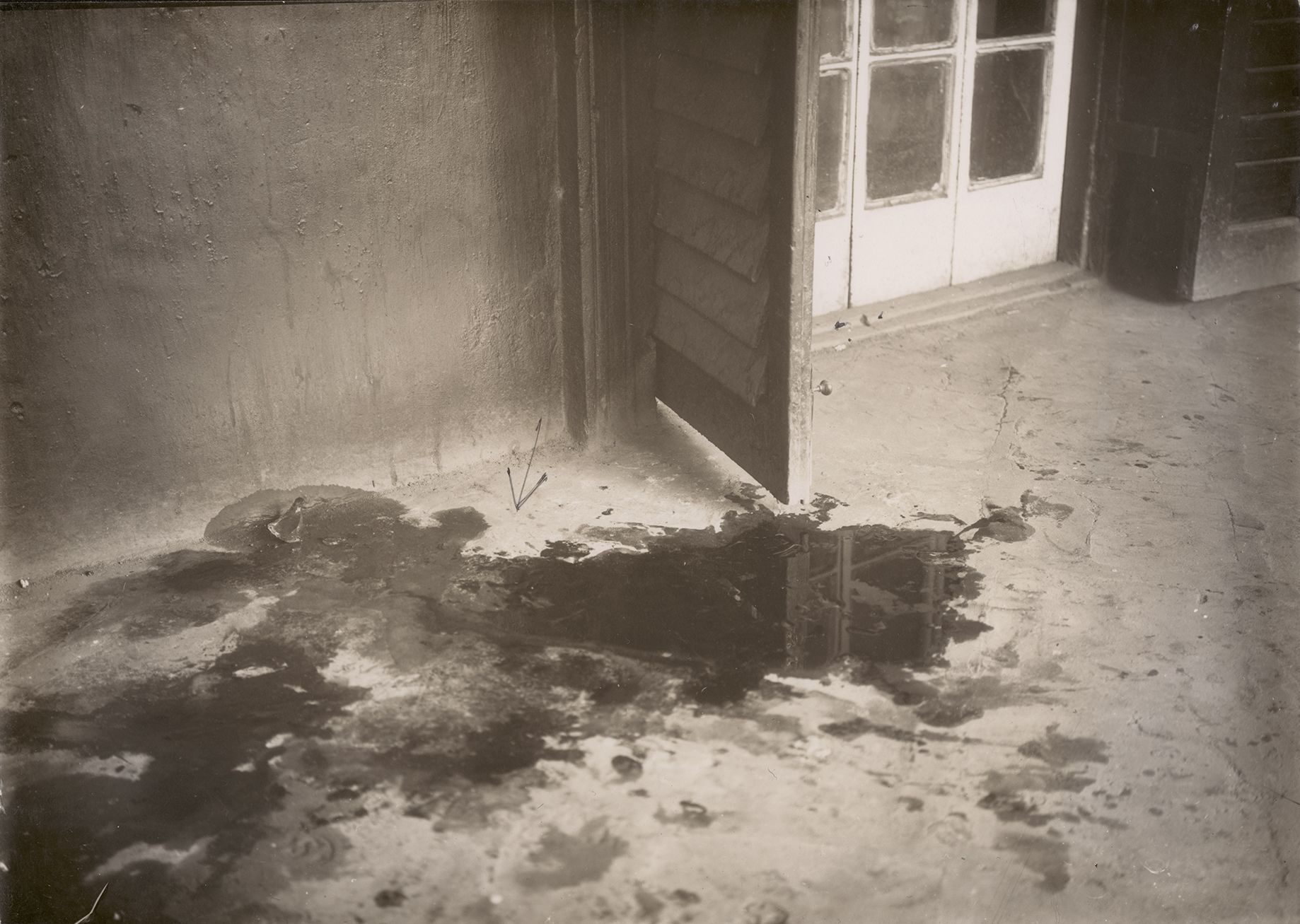
Forensic photographs of the murder scene of Lieutenant-Colonel Simpson : On 8 December 1930, in one of the most daring assassinations of the era, three young men of the revolutionary ‘Bengal Volunteers’ group murdered Lt. Col N. S. Simpson, Inspector General of Police. His murder was particularly bold as it took place in his (usually impenetrable) office in Writers’ Building, Calcutta, the seat of the Government of Bengal. Simpson was targeted for the brutal conditions suffered by Indians in jails.
Forensic photographs of the murder scene of Lieutenant-Colonel Simpson : On 8 December 1930, in one of the most daring assassinations of the era, three young men of the revolutionary ‘Bengal Volunteers’ group murdered Lt. Col N. S. Simpson, Inspector General of Police. His murder was particularly bold as it took place in his (usually impenetrable) office in Writers’ Building, Calcutta, the seat of the Government of Bengal. Simpson was targeted for the brutal conditions suffered by Indians in jails.
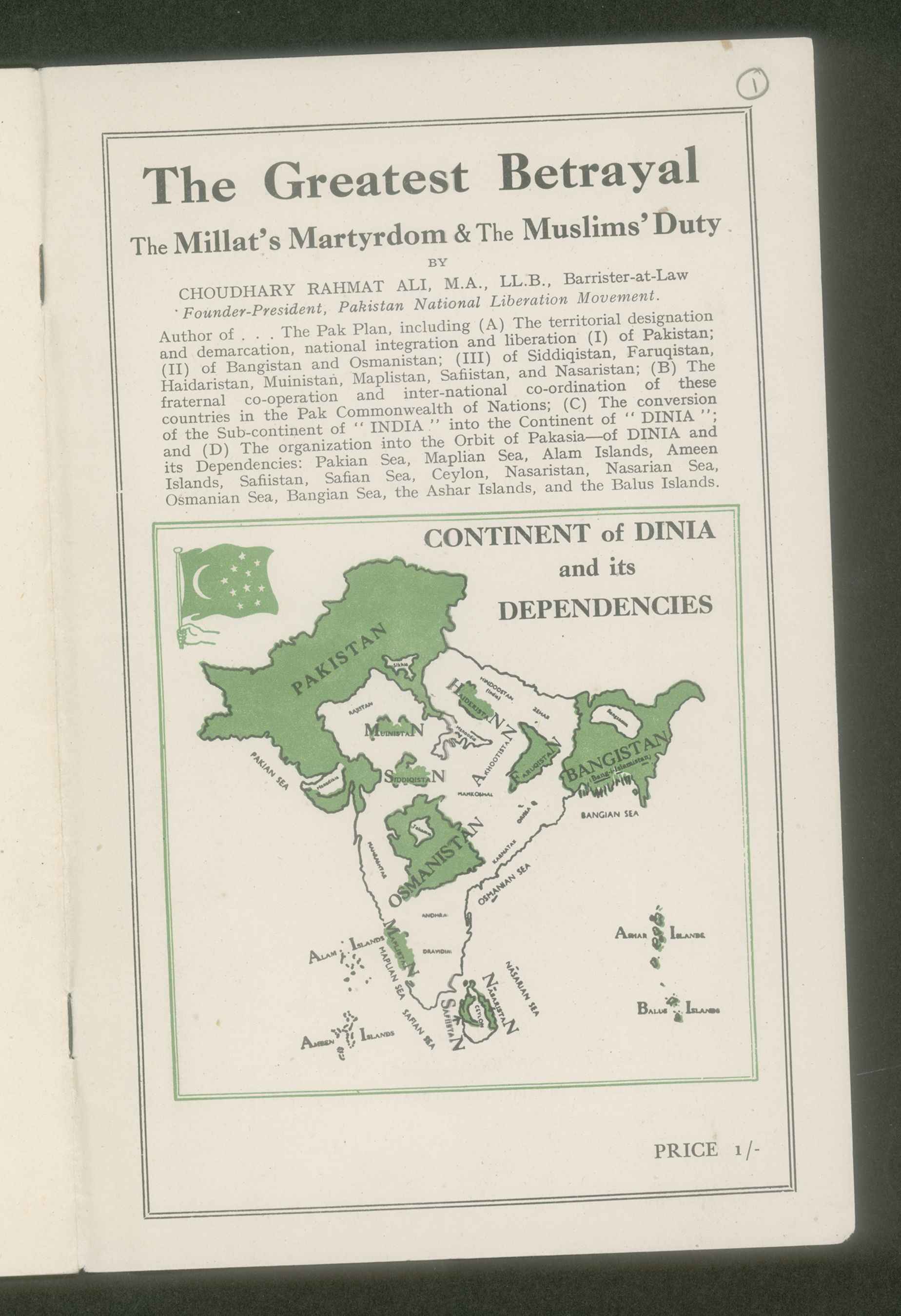
Choudhary Rahmat Ali pamplets from the collections of the Centre of South Asian Studies, University of Cambridge.
Choudhary Rahmat Ali pamplets from the collections of the Centre of South Asian Studies, University of Cambridge.
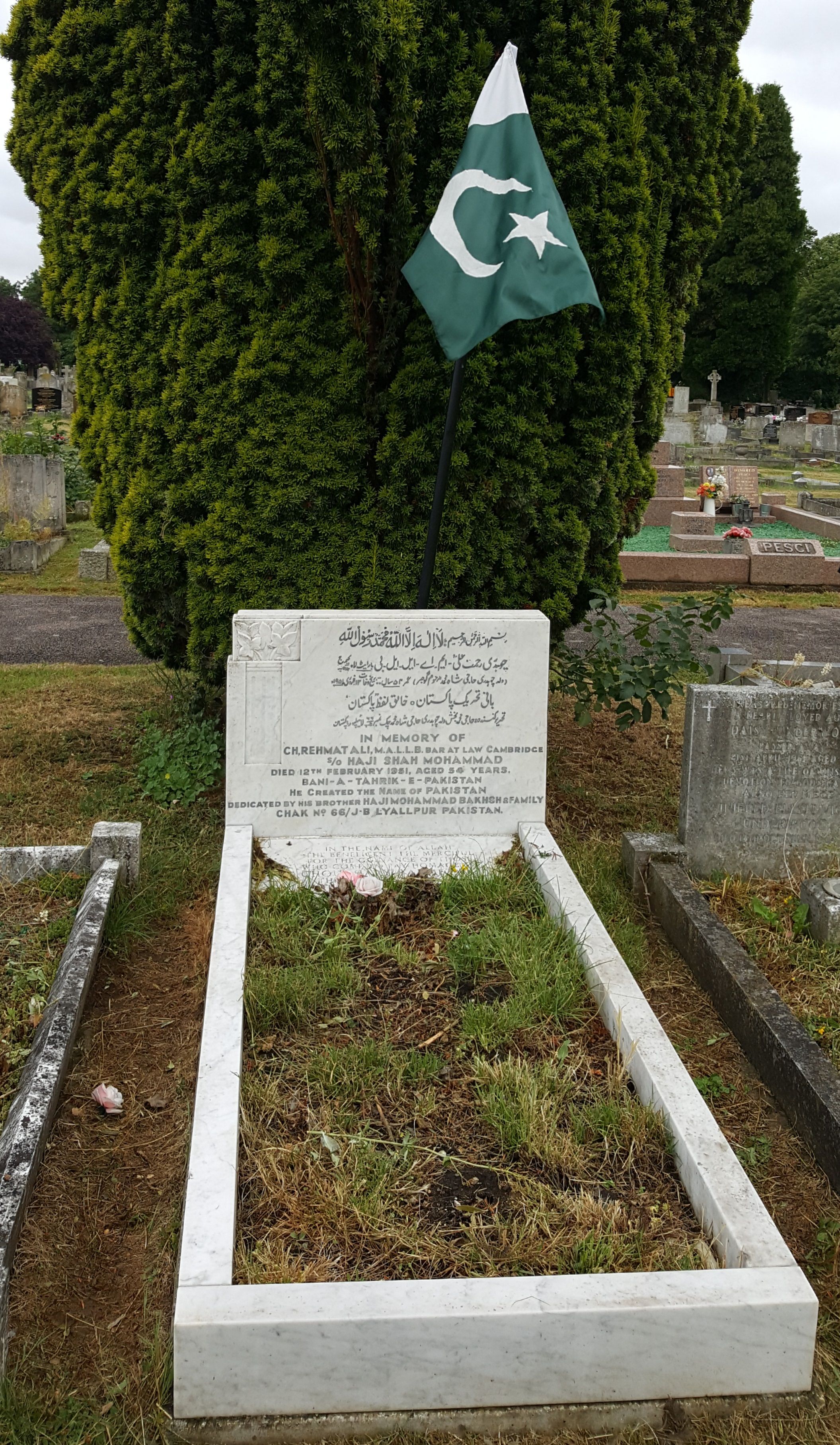
Grave of Choudhary Rahmat Ali (who coined the word 'Pakistan') in Cambridge City Cemetery. Photo: Edward Anderson, 2017.
Grave of Choudhary Rahmat Ali (who coined the word 'Pakistan') in Cambridge City Cemetery. Photo: Edward Anderson, 2017.
Ideas of Independence
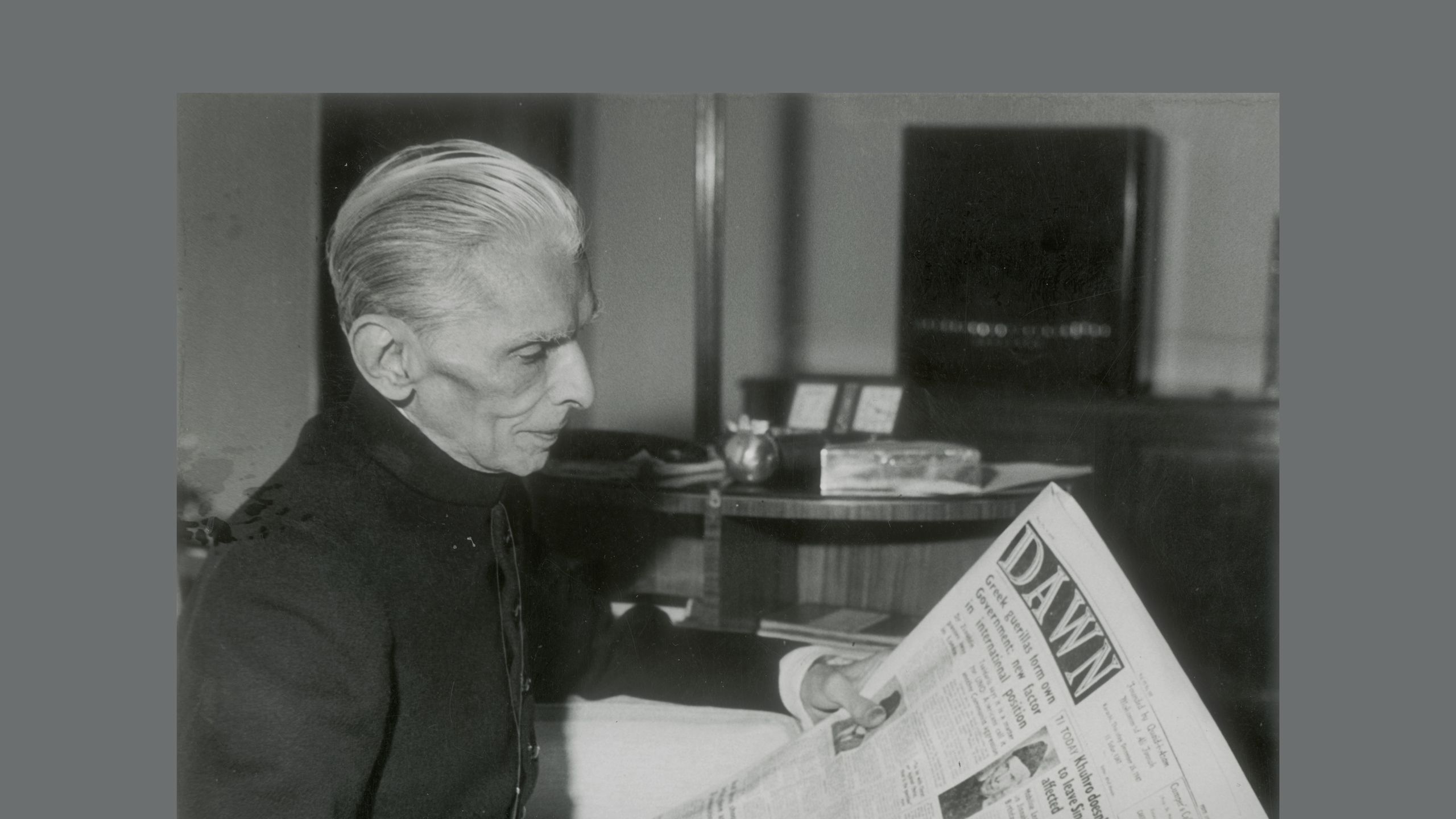
Tensions between Hindus, Muslims and Sikhs began to escalate in the mid-1920s, amid widespread popular unrest and post-war hardship.
The ‘Lucknow Pact’ between the Indian National Congress and the Muslim League – the cause of much optimism in 1916 – gradually unravelled.
Mohammed Ali Jinnah, the architect of the 1916 Pact – broke with the Congress by 1935 and revived the All-India Muslim League.
In 1940, soon after the beginning of World War II, the League’s ambiguous Lahore Resolution pressed for the creation of not one, but several, sovereign Muslim-majority states, when the British quit India.
In 1945, at the end of the war, Clement Atlee’s Labour government came to power with a novel policy for India.
Whereas Churchill had insisted that he would not preside over the dismemberment of the British Empire, Atlee concluded that in the context of the huge challenges of domestic post-war reconstruction, Britain’s grip on India was too weak to be sustained.
An ‘escape from empire’ had to be contrived.
The ‘Transfer of Power’ negotiations included leaders of the Muslim League, the Congress, and representatives of the British Cabinet (pictured here with Gandhi).
After months of efforts to reach a rapprochement between the Congress and the League, it became clear that the Congress was not willing to recognise the League as the representative of India’s Muslims or grant the safeguards it demanded on their behalf.
Lord Louis Mountbatten, sent out to oversee the handover of power, decided that instead of taking two years to organise the partition process, as was originally envisaged, he would wrap it up in under six months.
On 14 and 15 August 1947, India and Pakistan – which together had been the ‘jewel in the crown’ of the British Empire – became independent nations.
By the late 1960s, most of Britain’s empire around the world had been dismantled. In 1971, after a brief but brutal Liberation War, East Pakistan declared its independence as Bangladesh.
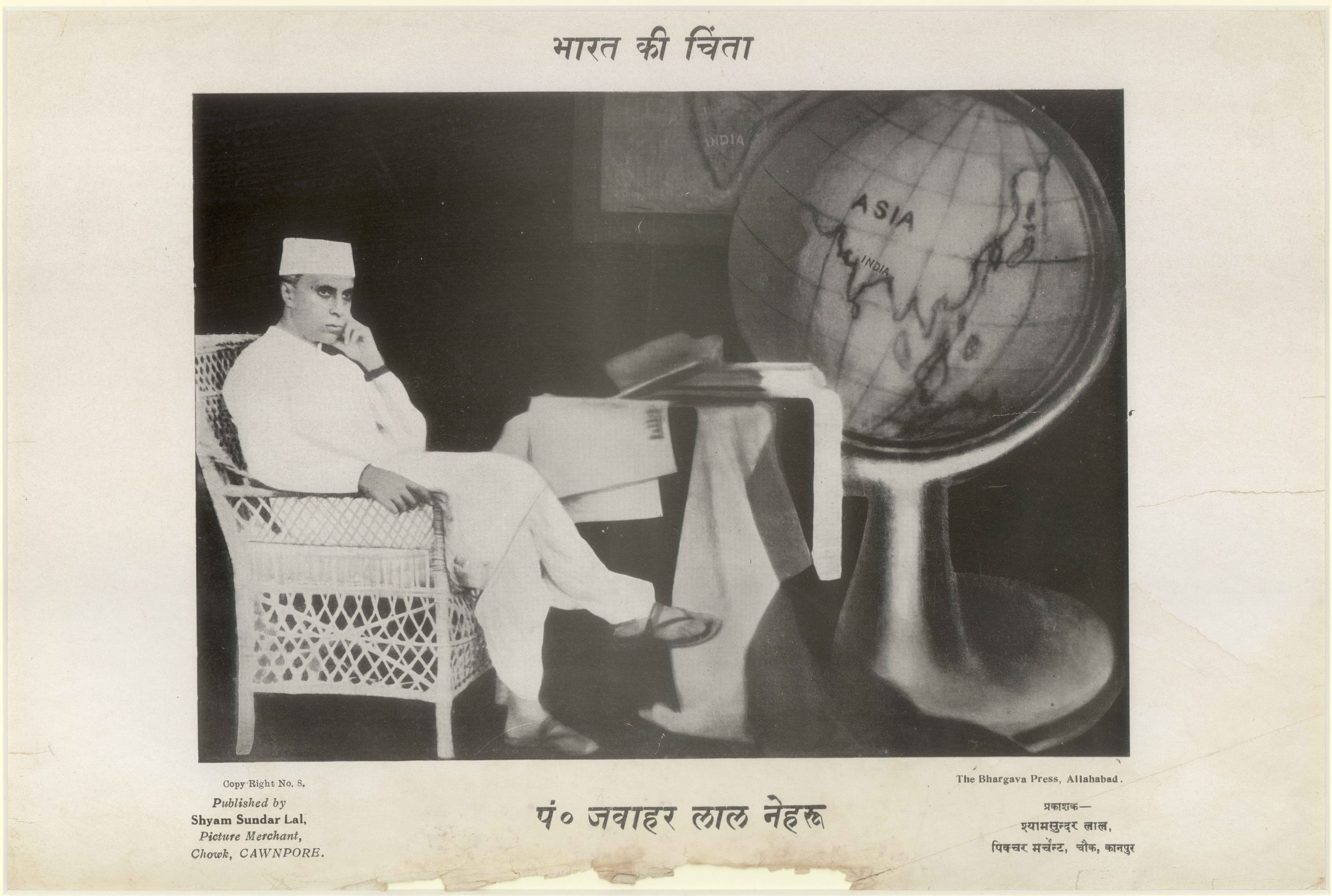
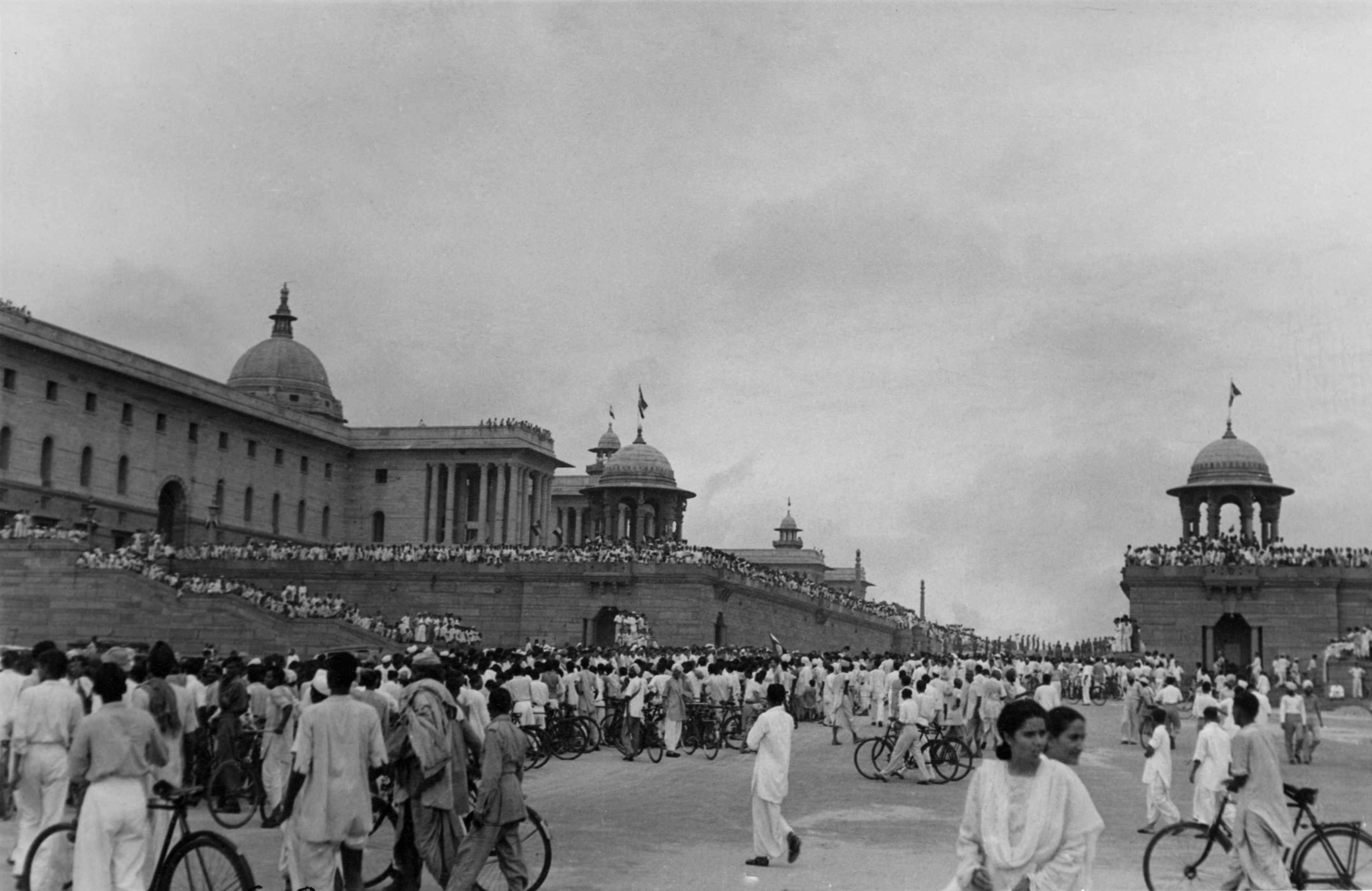
Partition
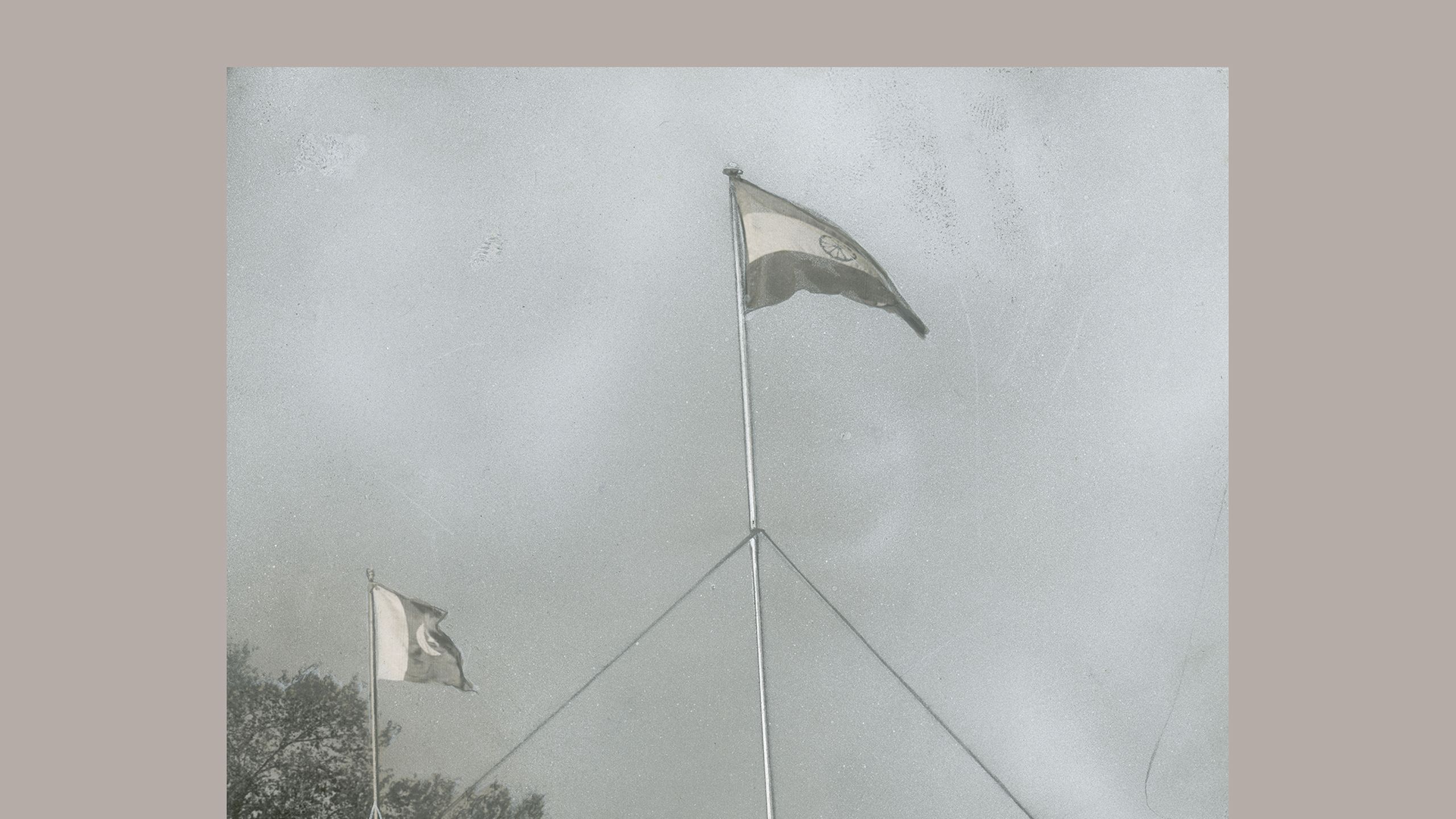
These silent films, from the Centre's collections, show refugees moving between the new borders of India and Pakistan. The footage was taken on both sides of Punjab's border during 1947.
These silent films, from the Centre's collections, show refugees moving between the new borders of India and Pakistan. The footage was taken on both sides of Punjab's border during 1947.
Partition – rushed through in under three months – was accompanied by widespread violence, particularly in the province of Punjab.
About 750,000 people are thought to have died and more than 14 million people crossed the borders between India and Pakistan, in the single largest mass migration in human history.
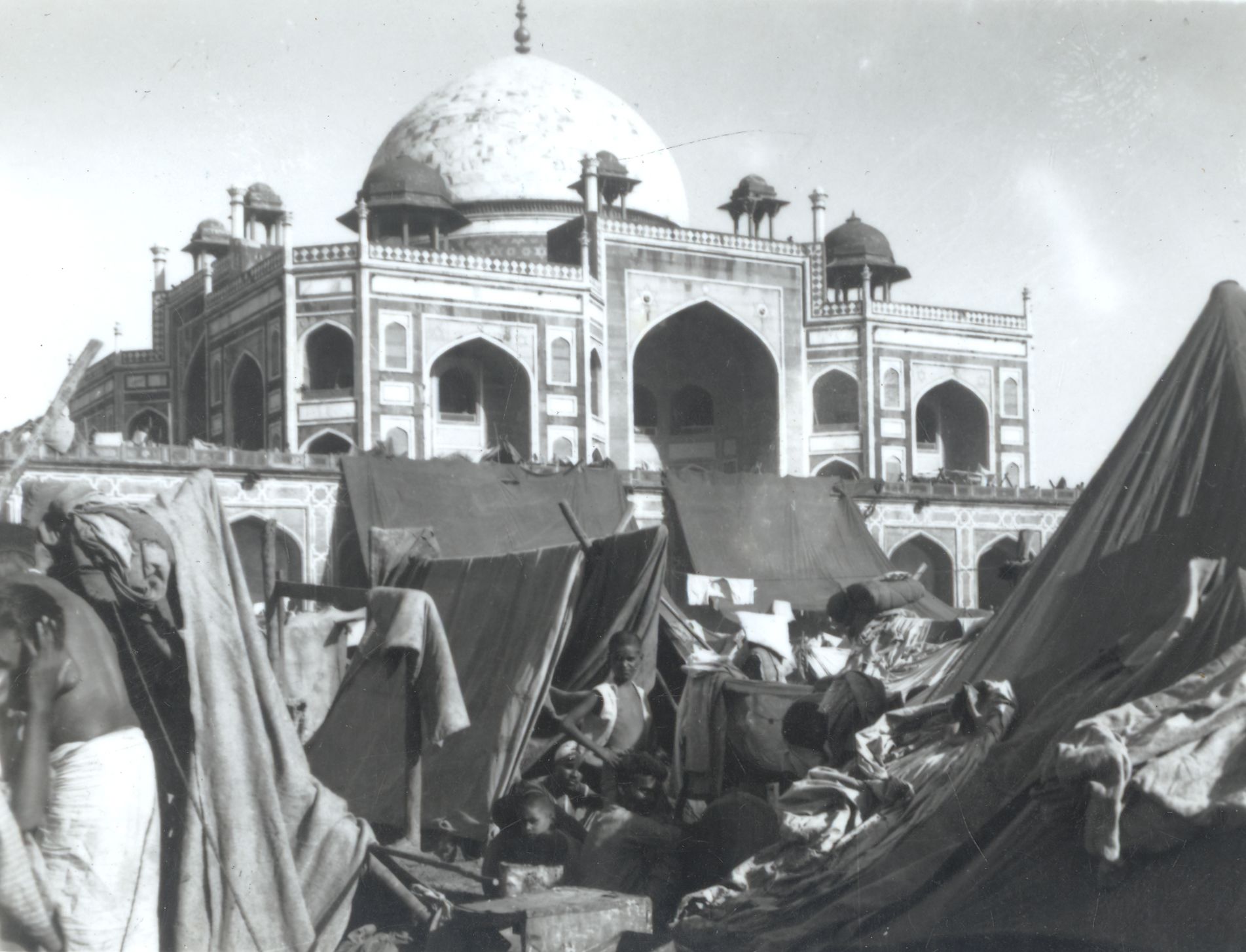
Refugees in temporary camps: Humayun’s Tomb, Delhi, 1947 (courtesy of the Partition Museum, Amritsar. Over 300,000 Muslims were displaced during the riots in Delhi in September 1947. Many took shelter in the 16th-century tomb of Humayun, the second Mughal emperor, and other temporary shelters, hoping to return home; others boarded ‘refugee special’ trains for Pakistan.
Refugees in temporary camps: Humayun’s Tomb, Delhi, 1947 (courtesy of the Partition Museum, Amritsar. Over 300,000 Muslims were displaced during the riots in Delhi in September 1947. Many took shelter in the 16th-century tomb of Humayun, the second Mughal emperor, and other temporary shelters, hoping to return home; others boarded ‘refugee special’ trains for Pakistan.
Millions more fled their homes, seeking shelter in neighbouring regions where their co-religionists were clustered.
The new borders between India and Pakistan were not published until after partition, and so many did not know whether their district was now in India or in Pakistan; and the uncertainty aggravated the chaos and panic.
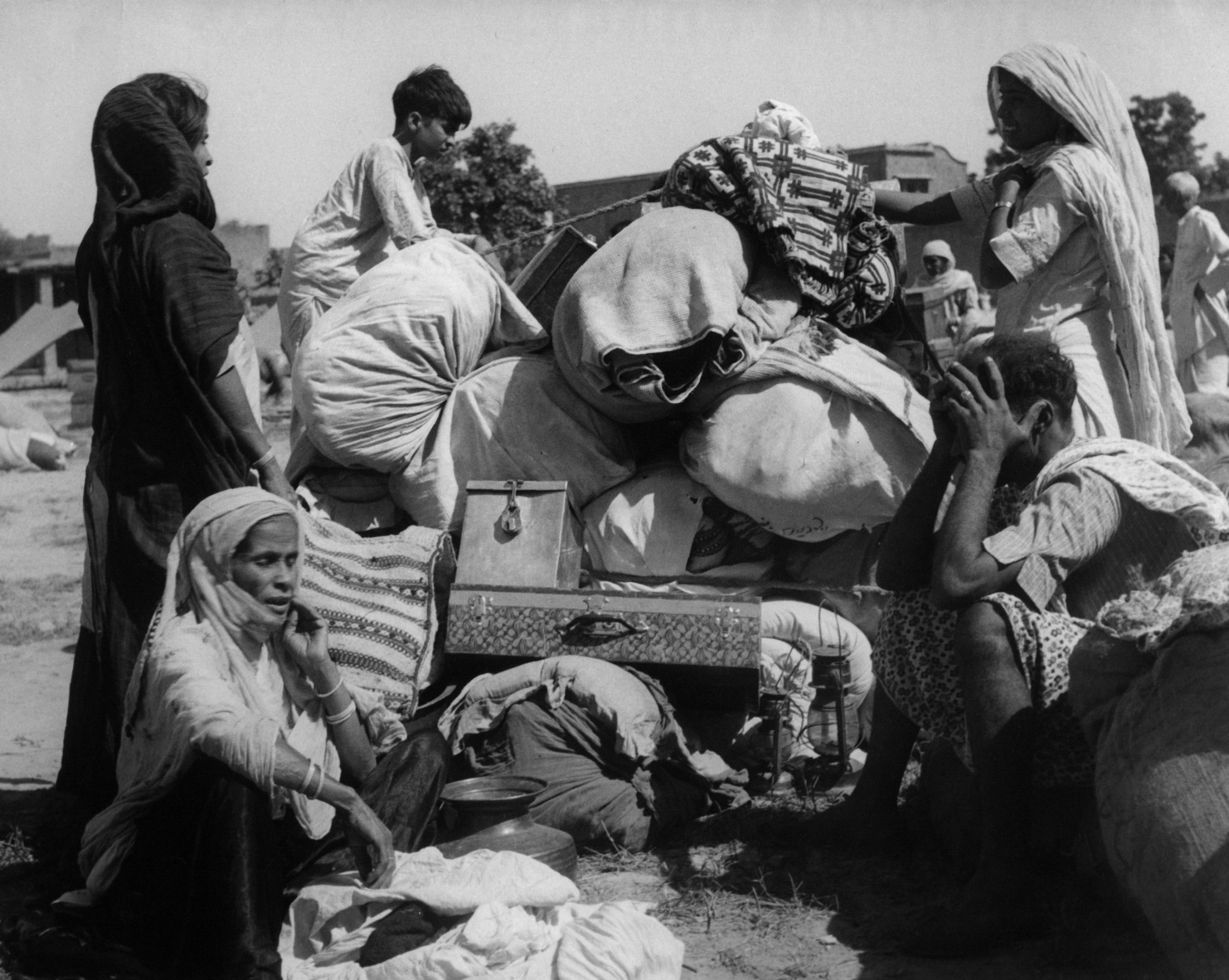
Refugees resting with their possessions: (Courtesy of the Partition Museum, Amritsar). Refugees travelled by foot and bullock cart, carrying a few possessions with them, in long ‘caravans’ of other refugees like themselves, seeking security in numbers. These caravans were often several miles long. Many were attacked by opportunistic marauders, or by refugees fleeing in the other direction. About 750,000 people are believed to have lost their lives during the communal violence of this time.
Refugees resting with their possessions: (Courtesy of the Partition Museum, Amritsar). Refugees travelled by foot and bullock cart, carrying a few possessions with them, in long ‘caravans’ of other refugees like themselves, seeking security in numbers. These caravans were often several miles long. Many were attacked by opportunistic marauders, or by refugees fleeing in the other direction. About 750,000 people are believed to have lost their lives during the communal violence of this time.
The governments of India and Pakistan assisted, as far as they were able, with the rehabilitation of the refugees from the Punjab and other areas deemed exceptionally ‘disturbed’.
But all other refugees had to rebuild their lives using their own networks of connections, and their meagre personal resources. Some did so with remarkable success.
However, the poorest among them, as well as unaccompanied widows and girls, fared less well, living for years in very basic camps.
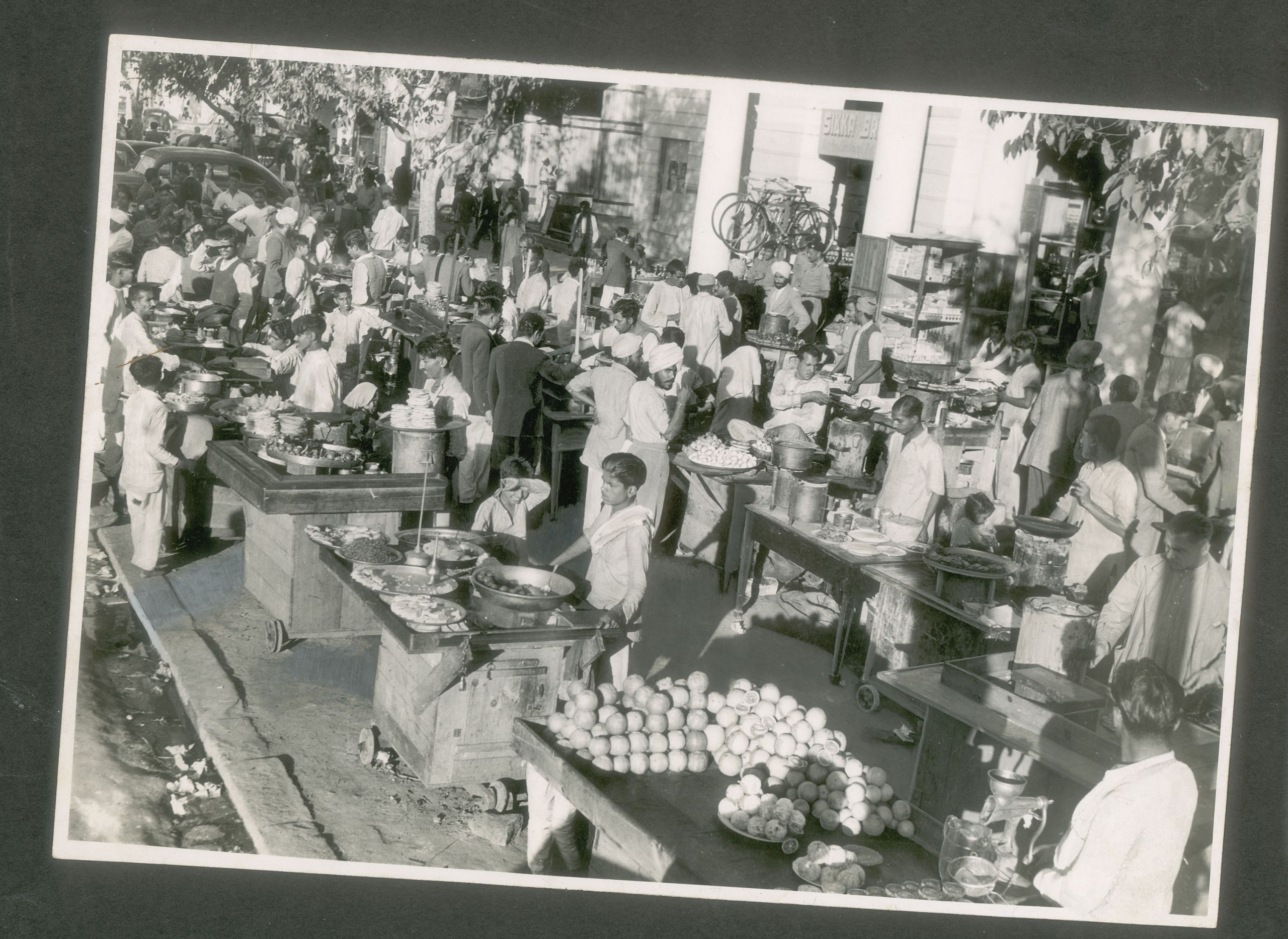
Refugees rebuilding their lives: Ian Stephens, a Fellow of Kings College Cambridge, played a role in the establishment of the Centre of South Asian Studies in the 1960s, to which he donated a large collection of photographs and papers. He was the editor of The Statesman, a leading daily newspaper. After partition he stayed on in Pakistan.
Refugees rebuilding their lives: Ian Stephens, a Fellow of Kings College Cambridge, played a role in the establishment of the Centre of South Asian Studies in the 1960s, to which he donated a large collection of photographs and papers. He was the editor of The Statesman, a leading daily newspaper. After partition he stayed on in Pakistan.
Some of these camps still exist in India and remain home to refugee orphans and widows, particularly in divided Bengal, where refugees continue to flow across borders to the present day.
The Raj
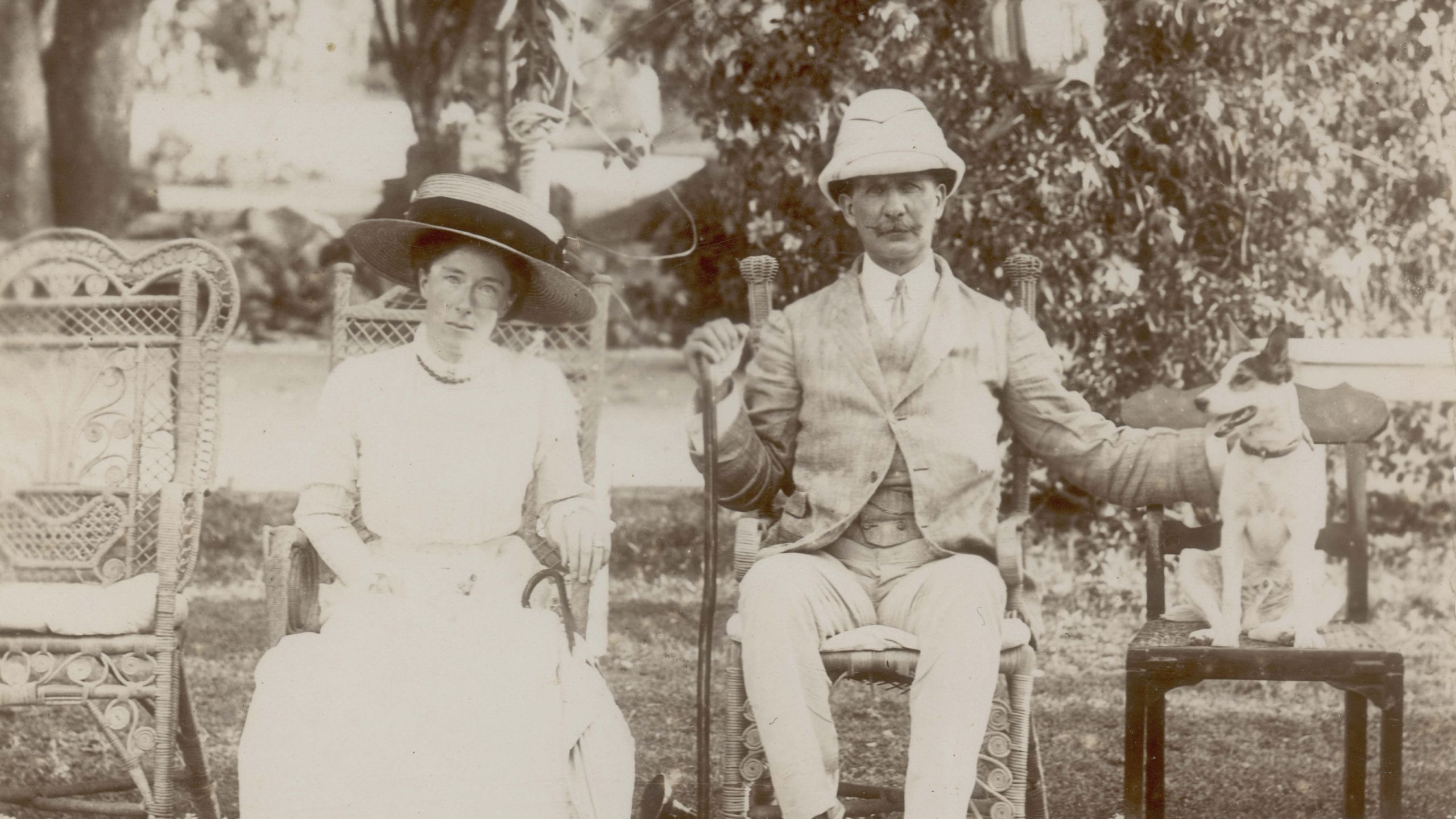
The British sought to maintain a careful distance from most Indians, sheltering in ‘white towns’, clubs and cantonments. The wives of British officers ran households full of Indian servants, each with assigned tasks, and socialised only with other Britons of equal rank.
The richest collections in the archive at the Centre of South Asian Studies relate to the professional and social lives of Britons in colonial India. These materials reveal much about how power was exercised at different levels of government.
The Centre's documents and images throw light on the relationships imperial officers developed with influential Indians to help them rule on the ground, aided by mapping and census surveys. Princes, landlords, and chiefs were seen as bulwarks of British rule in this era, and the British carefully cultivated their loyalty.
British colonial power represented itself through theatrical rituals of power such as the durbar, and grandiose monuments of Lutyens’ Delhi, with its syncretic blend of Mughal and neo-classical architectural styles.
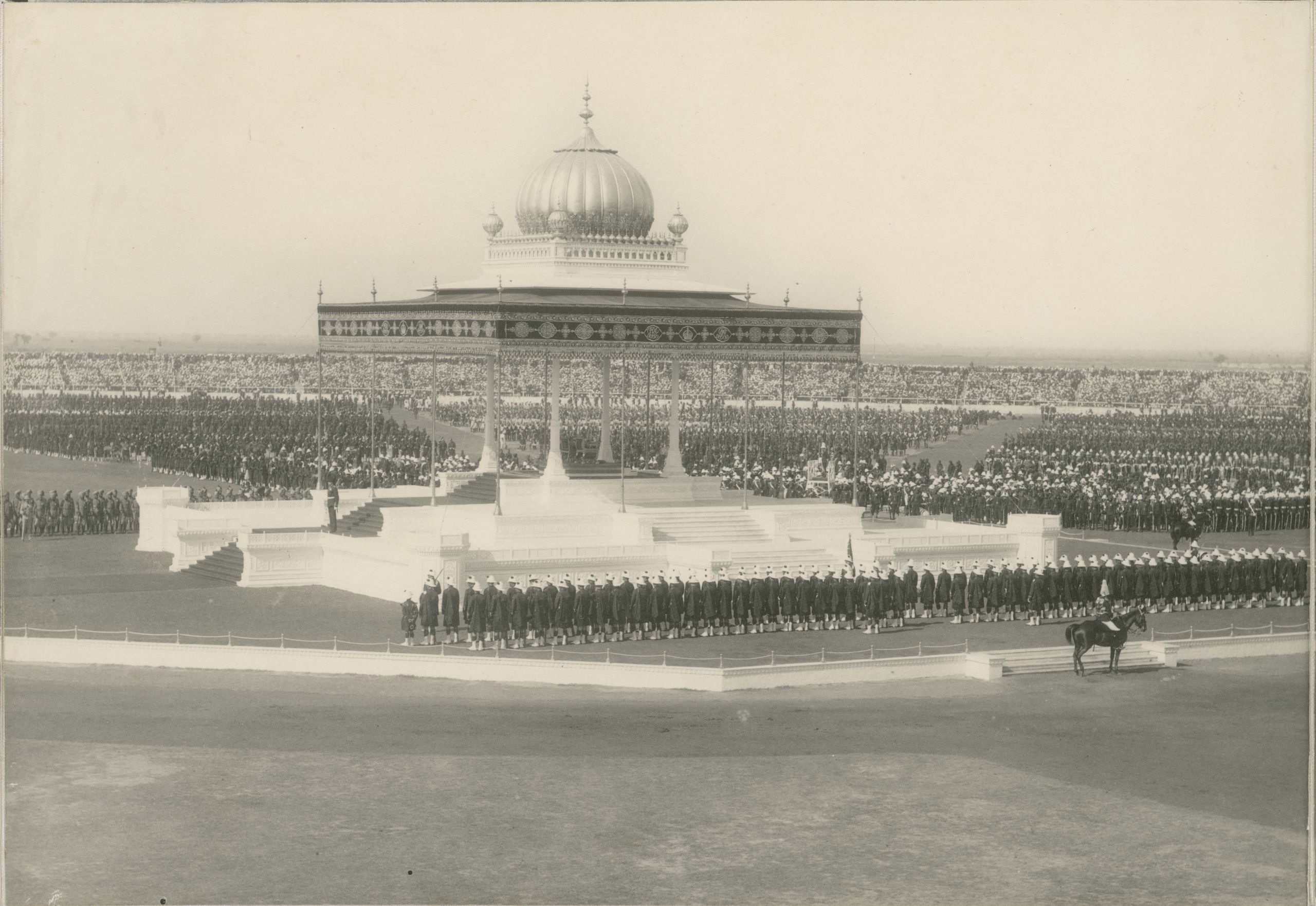
Coronation Durbar panorama: The ‘Delhi Durbar’ (Court of Delhi) was an extraordinary series of three mass assemblies – in 1877, 1903, and 1911 – the final one commemorating the coronation of King George V and proclaiming him the Emperor of India. The Durbar was an epic display of power and status for the British (albeit in the face of rising anti-colonial sentiment).
Coronation Durbar panorama: The ‘Delhi Durbar’ (Court of Delhi) was an extraordinary series of three mass assemblies – in 1877, 1903, and 1911 – the final one commemorating the coronation of King George V and proclaiming him the Emperor of India. The Durbar was an epic display of power and status for the British (albeit in the face of rising anti-colonial sentiment).
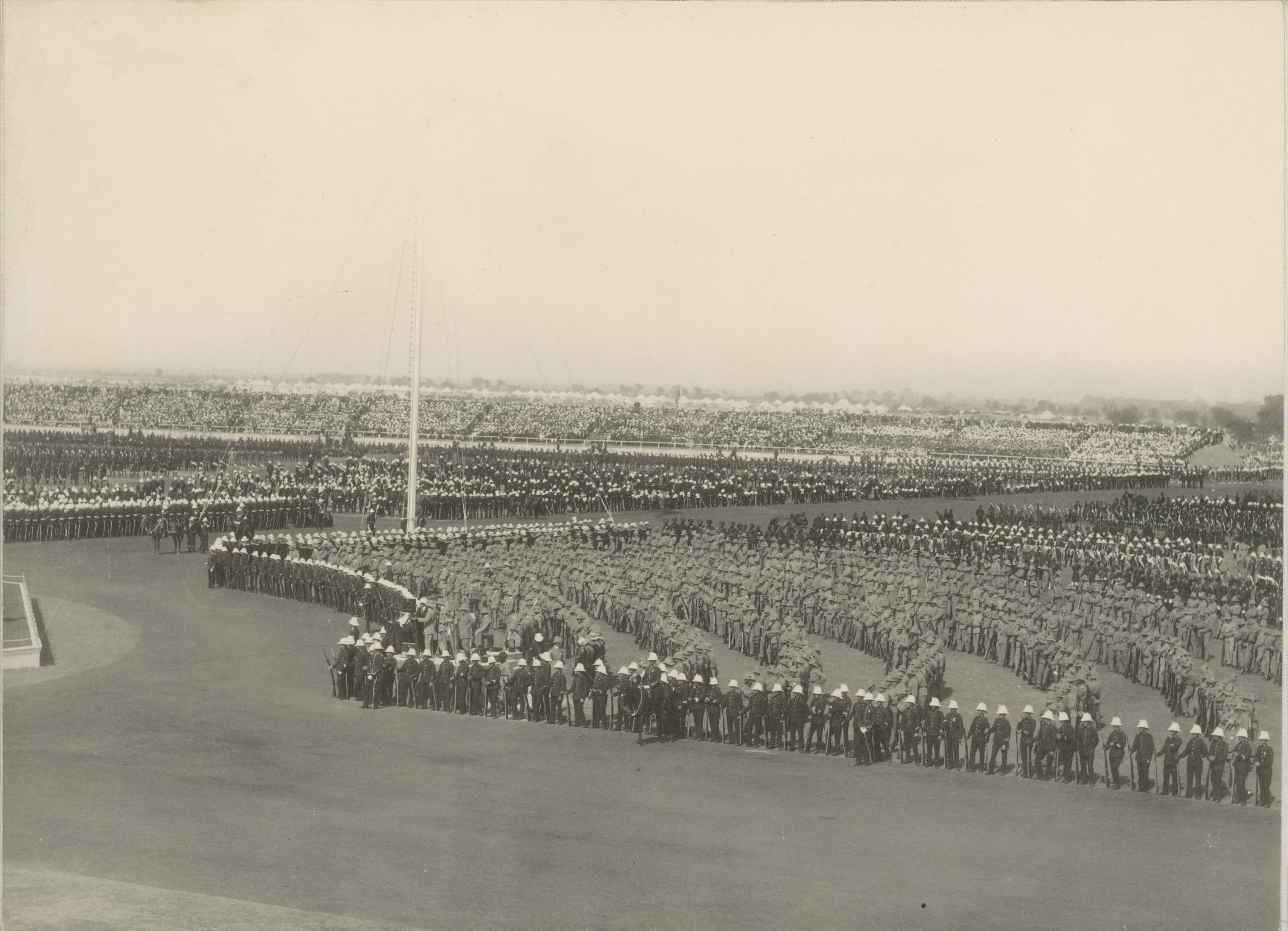
Coronation Durbar panorama, 1911.
Coronation Durbar panorama, 1911.
But in reality, the closest that most Indians got to the colonial state – particularly in rural regions (which, in 1947, were home to over 80% of the population) – was perhaps a post-box and the occasional visit of a district collector. How deeply colonial policies transformed the subcontinent is a subject that historians continue to debate.
Added Anderson: "We want people to learn more about the way in which India and Pakistan gained their freedom - and the colonial state from which they achieved it.
"Although Gandhi is still revered as a central figure, it is undeniably the case that at the time - and to this day - it's often the militant revolutionaries who have held the firmest grip on the imagination of the population.
"One simple reason is that the stories are captivating: people dressing up in disguises, smuggling themselves and weapons, and operating in secret.
"Gandhi's non-violent approach was not necessarily subscribed to by the entire population. Even today, there is a lasting iconography around figures like (revolutionary) Chandra Shekhar Azad who many saw as striking back at a colonial state that subjugated Indians both physically and psychologically.
"Our exhibition, using the remarkable and unique archives of the Centre of South Asian Studies, is a window on one of the defining and most tumultuous moments of the 20th century."
Freedom and Fragmentation: Images of Independence, Decolonisation and Partition runs until October 27, 2017 at the Alison Richard Building, 7 West Road, Cambridge.
Credits:
Words: Stuart Roberts, Edward Anderson, Joya Chatterji
Film: Kevin Greenbank
Images: Centre of South Asian Studies, and the Partition Museum, Amritsar
Story design: Stuart Roberts

